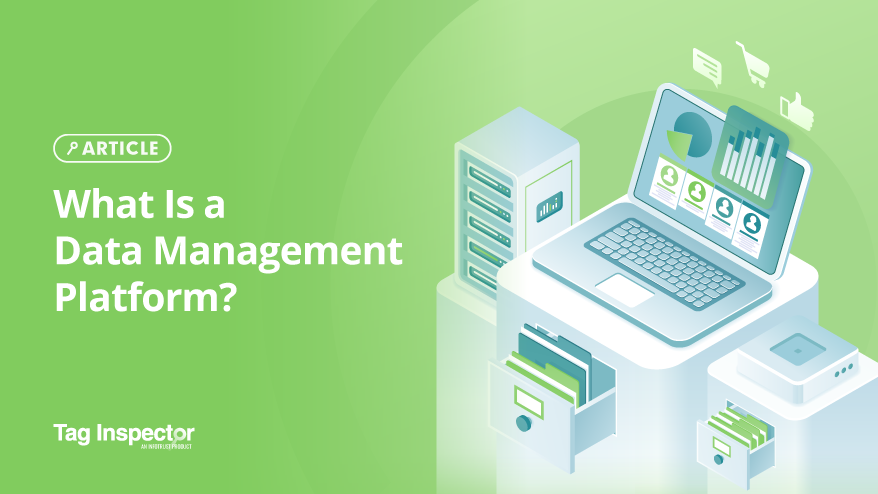A data management platform (DMP) is used for collecting, organizing, and activating first, second, and third-party audience data from various sources. Once the data is stored within the data management platform, it then builds detailed customer profiles that will enable targeted advertising and personalization initiatives. One of the many advantages of a data management platform is that it enables the business to leverage the data and provide better insight on customer behavior.
Most users enter a website to look at a product, and then notice that same ad for that same product on websites they interact with for the next few days/week. This is a common application of how DMPs work in everyday lives.
What is the process flow for a DMP? How does it all work?
The flow of a data management platform first begins when it collects data. For example, a user visiting a webpage, or even submitting a registration form online, can trigger the data collection process to start. Data can also come from multiple sources—either via desktop, mobile, or tablet devices. Once the data management platform has collected data, the next step is to process and integrate.
The data goes through a sub-process flow that cleans the data and extracts missing or junk values. This part of the process ensures that only the most accurate data is utilized when generating and building customer profiles.
After that, machine learning algorithms identify patterns across sets of users and organize them. Following that, the data management platform then creates individualized user profiles. User profiles are segments of customer demographics that are intended to help visualize patterns and tendencies across the industry. User profiles also help identify market opportunities that are still left to be discovered by growing brand awareness and loyalty.
Finally, once all the data has been aggregated, processed, and properly segmented, then the data is put to use through demand side platforms (DSP) or supply-side platforms (SSP). At this point, advertisers use other third-party demand side platforms to provide targeted and personalized content to their intended audiences.
What is a Data Management Platform commonly used for?
Data Management Platforms are frequently used for profiling, analyzing, and targeting online customers.
The purposes can be generalized into the following categories below:
- Advertisement Targeting – Create audience segments and target users specifically with personalized ad campaigns. If a user clicks on a product link, they will see similar advertisements showcasing similar or the same product across different digital channels.
- Building User Profiles – Using sets or groups of data on user information to represent real people. User profiles can either be manually created or through machine learning algorithms.
- Look-Alike Modeling – Identify new clients who behave similarly to current customers for targeted campaigns. This can also be used to find look-alike audiences of the business’s best and most profitable customers.
- Business Insights – Discover new knowledge about customers and services through data analysis to create and improve business processes, products, and services.
- Content and Product Recommendations – Build a personalized experience for users.
- Monetizing Data – Sell DMP data to make additional revenue.
- Audience Enrichment – Get a better understanding of your customers through web analytics.
- Growing Customer Base – Discover new segments of customers and build brand awareness, as well as loyalty.
What’s the recommended way of using a DMP?
To maximize the use of a DMP, we recommend making sure the data is taken from as many sources as possible. This includes first-party, second-party, third-party, cross-device, as well as offline data. During this process, it is also important to ensure the data is as accurate as possible, so monitor the data ingestion during this phase and diagnose/troubleshoot any issues.
Once the data is collected across multiple sources and cleaned, build your audience. Identify the right types of audiences, as well as campaign targets to expand reach. Also consider incorporating cross-device marketing across delivery to reach prospects across the web and social channels.
Finally, examine the data and identify which marketing campaigns perform well and what devices drive the most conversions and sales. Refine, and continue to refine target audiences and build campaigns utilizing the most up-to-date information available.
Why are DMPs useful?
DMPs are especially useful for building a centralized solution to help marketing teams manage and analyze customer data. This creates a panoramic view of consumers that a user would otherwise be unable to obtain by looking at individual datasets from platform to platform.
DMPs also improve campaign performance by targeting the right prospective customers at the right time to bolster overall ROI.
As businesses evolve to meet the demands of consumers, having reliable and accurate data becomes more and more crucial. With an exceptionally competitive market, collecting and analyzing customer information can give a business a more competitive edge.
